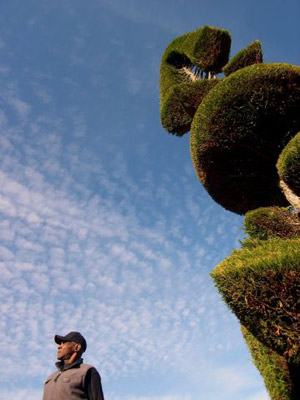A Man Named Pearl
Pearl Fryar, Metra Fryar, and Ronnie Williams star in a documentary directed by Scott Galloway and Brent Pierson.

In this season of iron men and dark knights, A Man Named Pearl stands out. The documentary chronicles the life and art of self-taught topiary artist Pearl Fryar, but this is hardly HGTV. Horticultural experts are confounded by Fryar’s ability to transform plants discarded from a local nursery into living art; on his three-acre property in South Carolina he’s created a serene wonderland of abstract yet beautiful forms. And it’s doubtful Fryar’s techniques – climbing 12-foot ladders in the dark and firing up the hedge trimmer to engage in some midnight topiary-making – should be tried at home.
The filmmakers have chosen to forgo any voiceover narration, opting instead to let Fryar and his family and friends tell his story. What’s remarkable about the film is the many dimensions it portrays so compactly. The issue of race figures prominently: Fryar is African American, the son of a sharecropper with a third-grade education. But he is an inspiring figure not simply because he has overcome the prejudice harbored by some of his white neighbors – ironically, he has become a one-man engine of economic growth and tourism in one of the poorest counties in the state. Aspiring artists may find encouragement in the art establishment’s recognition of this retired factory worker’s relentless pursuit of his art form. And those who question the ability of a single person to impact the lives of others will find an unexpected answer in the faces of the people – young and old, of all races – who experience Pearl Fryar’s garden.



